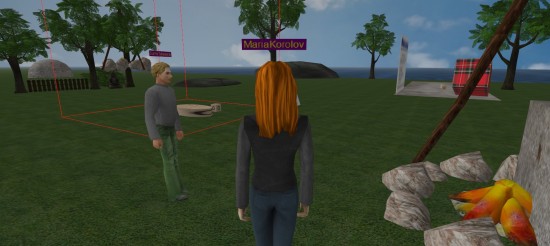Press release: WebGL Momentum Creating the Industry’s Most Secure and Portable 3D Platform
Multiple WebGL implementations now fully conformant on desktop and mobile; WebGL 1.0.2 being ratified for stricter behavior and functionality extensions
SAN FRANCISCO — The Khronos Group today announces that multiple WebGL 1.0.1 implementations are now fully conformant on a range of desktop and mobile platforms – with many more to follow. In addition, the WebGL 1.0.2 specification and a set of extensions have been submitted for ratification and are expected to be formally released in April 2013. The browser and GPU communities have been working diligently in the WebGL working group to resolve GPU driver issues and tighten the WebGL specification by precisely defining behaviors to provide a trusted and reliable platform that provides portability for 3D content within HTML5 browsers across diverse platforms. The latest information on the WebGL specification is here.
Among the first WebGL 1.0.1 implementations submitted for approval as being fully conformant are both Google Chrome 25 and Firefox 19 on Windows, Mac and Linux and a WebGL-enhanced Android browser for Tegra based platforms from NVIDIA.

“I want to thank in particular all of the major GPU vendors on desktop platforms, including AMD, Intel and NVIDIA, the developers of the Mesa 3D graphics library, the Chrome team at Google, Mozilla Corporation and Apple for their hard work and persistence in fixing bugs in order to ensure consistent operation of the WebGL, and OpenGL(R), APIs across operating systems and GPUs. This is a major milestone in bringing the power of the GPU to the Web,” said Ken Russell of Google and WebGL Working group chair.
The WebGL 1.0.2 specification and conformance tests significantly tighten specified behavior for improved portability and testability:
- adds many clarifications for specification behavioral precision – principally thanks to Mozilla;
- mandates support for certain combinations of framebuffer formats, to ease developer adoption;
- clarifies interactions with the encompassing HTML5 platform, including the browser compositor and high-DPI displays;
- dramatically increases the number of conformance tests to roughly 21,000 to improve both the breadth and depth of test coverage – thanks principally to work by Gregg Tavares at Google and the OpenGL ES working group.
In addition, the WebGL working group has submitted a number of optional extensions for ratification that are also expected to be released in April:
- JavaScript-level debugging of WebGL API calls and shaders;
- a query to ensure lost context events are handled correctly – such as when a mobile device is powered off when WebGL is executing;
- additional 3D functionality from the OpenGL ES 2.0 ecosystem such as anisotropic filtering, standard derivatives and vertex array objects.
“The close cooperation between browser and silicon vendors to ensure the GPU is being reliably and securely exposed to the Web is ongoing proof that Khronos is a highly productive forum to evolve this vital Web standard,” said Neil Trevett, president of Khronos and vice president of Mobile Content at NVIDIA. “Khronos remains committed, not only to evolve the functionality of WebGL to enable Web developers to use rapidly growing capabilities of mobile GPUs, but also to continue to work as a good citizen within the larger HTML5 standards community.”
Come to the San Francisco WebGL Meetup
When: Thursday March 28th at 6:30PM
Where: Hilton Hotel, 333 O’Farrell St, Tower 1, Presidential Suite – #1-4178
What: Learn more about these announcements and see the latest demos, give your input and feedback to WebGL working group members and network with the WebGL community. Refreshments served. Spaces are limited — please sign-up here.
About The Khronos Group
The Khronos Group is an industry consortium creating open standards to enable the authoring and acceleration of parallel computing, graphics, vision, sensor processing and dynamic media on a wide variety of platforms and devices. Khronos standards include OpenGL, OpenGL ES, WebGL, OpenCL, WebCL, OpenVX, OpenMAX, OpenVG, OpenSL ES, StreamInput and COLLADA. All Khronos members are able to contribute to the development of Khronos specifications, are empowered to vote at various stages before public deployment, and are able to accelerate the delivery of their cutting-edge media platforms and applications through early access to specification drafts and conformance tests. More information is available at www.khronos.org.
Khronos, DevU, StreamInput, WebGL, WebCL, COLLADA, OpenKODE, OpenVG, OpenVX, OpenSL ES and OpenMAX are trademarks of the Khronos Group Inc. ASTC is a trademark of ARM Holdings PLC, OpenCL is a trademark of Apple Inc. and OpenGL is a registered trademark and the OpenGL ES and OpenGL SC logos are trademarks of Silicon Graphics International used under license by Khronos. All other product names, trademarks, and/or company names are used solely for identification and belong to their respective owners.
- Storylink Radio Brings Interactive Storytelling to the Opensim World’s Fair - February 7, 2025
- Breaking news: Philip Rosedale to speak at OSCC on Sunday - December 7, 2024
- Registration now open for December’s OpenSim Community Conference - November 13, 2024
